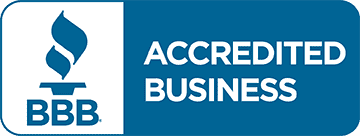





Retail space is designed to attract and keep the attention of prospective customers. It’s clearly very important to keep the store clean and looking its best in order to do that.
Unfortunately, wear and tear take their toll on any store, and without finding a way to keep it looking fresh, your business will start to drop off.

What can a retailer do when a store starts to look worn? The tendency of most storekeepers is to look for a quick, inexpensive option to bring it back into good shape. However, that type of “quick fix” usually only works for a little while and when it fades or fails, things may actually become worse than when you started.
The most obvious area that shows signs of being in need of refurbishment is often the floor. Shelves are usually stocked with merchandise and with most stores there are only a few windows that can be dressed. Flooring condition is almost always the most glaring area of need and can be the most difficult to resolve.
Even the most experienced retailer has problems figuring the right retail flooring system. Almost all stores have hard surface floors, usually made of concrete. For many stores, the concrete has been painted or polished, although some may be covered with vinyl tile or some form of linoleum (all of which have seams).
Installing clay or any hard tile is going to be expensive and they involve grout, take a long time to lay down, and still cause problems because of uneven wear leading to bumps and ruts, plus it takes an enormous amount to do AND the cost of labor is mind-boggling.
If the concrete is in good shape, you could try painting, but that doesn’t hold up under even moderate traffic. Tile, or even vinyl, is expensive and, again, doesn’t hold up to the constant foot traffic. Let’s not forget machinery like low-jacks or tow motors which catch on the tile edges and cause damage.
Stripping and waxing tile floors doesn’t do a lot of good, particularly if there are stains and uneven colors – scratches or gouges – which defy any form of compound or even light sanding. This can become considerably expensive over time. Often times the best solution is to consider a durable epoxy floor coating system.
Because it goes directly over the base concrete and bonds to it permanently, epoxy/resinous coatings often make the most sense. While there is a cost to its application, the benefits – including lifespan – often outweigh short-term cost.
Epoxy coating is probably the least intrusive and most durable way to handle the problem. It normally takes three days for an entire installation which includes, preparation (diamond grinding), patch work and 3 epoxy/resinous coats. By providing the correct diamond grinding equipment, we’re able to adequately condition a substrate for strong adhesion which is one of the most important steps to ANY coating process.
Plus, it is very attractive – there are many colors and designs that can be tailored to fit. Colors and texture can be created with various types of broadcast materials that include, quartz, chips, metallics, etc..
"*" indicates required fields